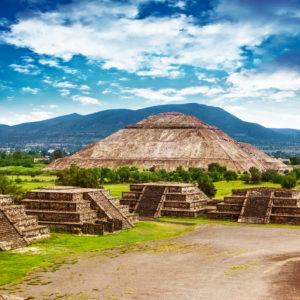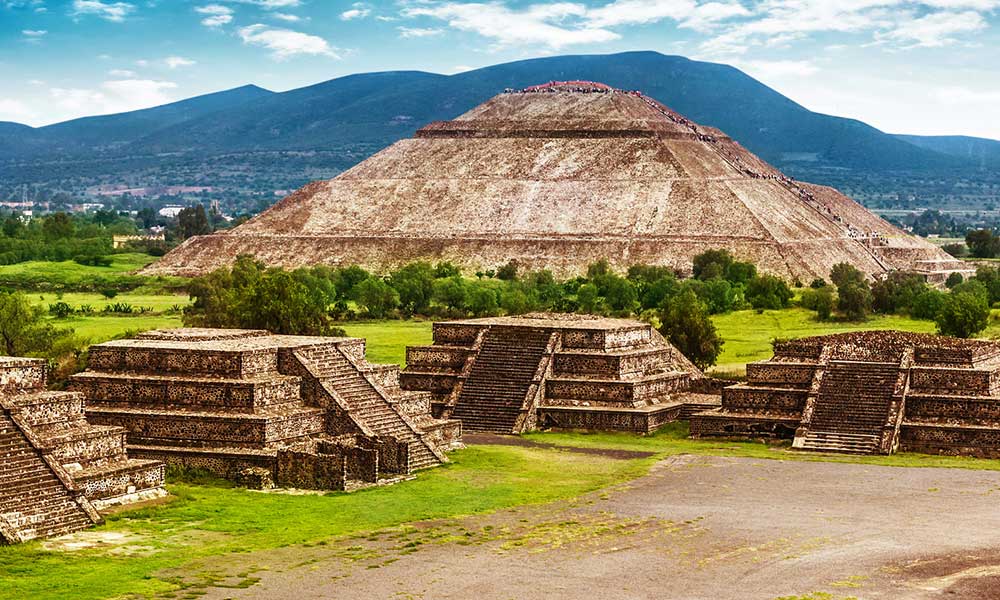The ancient Aztects, Incas, Myans, and other great South American civilizations had an advanced society in science, engineering, medicine and health to name a few. On the subject of health, traditional foods they ate consist of maize, corn, beans, squash, spirulina (from nearby lakes), chocolate, chia seeds, avocados, chillies, fish, game, herbs and plants. When it came to plants and herbs, the Aztecs had considerable empirical knowledge.
 The emperor Motecuhzoma I created the first botanical garden in the Fifteenth Century. As the Mexica (the Aztec group that ruled in Tenochtitlan, now Mexico City) conquered new lands, new specimens were brought to these and other botanical gardens.
The emperor Motecuhzoma I created the first botanical garden in the Fifteenth Century. As the Mexica (the Aztec group that ruled in Tenochtitlan, now Mexico City) conquered new lands, new specimens were brought to these and other botanical gardens.
Later, the natives of newly conquered areas were brought to tend plants from their areas. Among other things these gardens were primarily used for medical research; plants were given away to patients with the condition that they report on the results. These activities are reflected in the Aztec’s extensive and scientifically accurate botanical and zoological nomenclature (Ortiz de Montellano 1984).
Now, being that Central and South American countries such as Mexico, Peru, Uruguay, Brazil and Argentina to name a few, has an impressive herbal plant history, the highly nutritious plant Moringa is not native to these parts of the world and has been cultivated in the past recent history.
Historical records show how the Moringa tree spread globally. Dr. Mark Earl Olson, of the Universidad Nacional Autónoma de México states, “ship records that show that the Moringa came to Mexico via the Manila-Acapulco route hundreds of years ago.” Since then, it has thrived throughout Mexico and the New World tropics. Being that Moringa has been around thousands of years, and now being cultivated in South American countries, it willing feeds mass populations resulting in improved health.
As a result, new farms have sprung up in Central and South America and finally the United States. For example, Mexico has exported small quantities to the United States, Panama and Spain. Meanwhile, Moringa production is being initiated in countries like Peru, Ecuador, Paraguay and Argentina. As of 2012, support for Moringa farmers is being offered by the Honduran federal government through the Secretary of Agriculture and by private foreign investment firms. The plant’s market potential is widespread given its easy growth and high nutrient content.
Moringa is valued for its leaves and high-protein seeds which lends to its nickname “the magical tree”, it has 4 times the vitamin A of carrots, 2 times the protein of milk (and 4 times the calcium), 7 times the vitamin C of oranges, and 3 times the potassium of bananas. Moringa also has 25 times the iron of spinach, and high in Omega 3’s, which can take care of all nutritional needs of the body. Futhermore, this nutritionally powerful plant contains 92 vitamins and minerals and 46 antioxidants and is good for healing diabetes, iron deficiencies, high blood pressure, gout, energy, weight management, memory and a host of other aliments.
In the San Francisco Bay Area, Los Angeles, Arizona, Texas, New Mexico, Florida, New York and other parts of the U.S., there are prosperous and growing Latino districts/populations making a serious social and economic impact. However, portions of these same Latino populations in the United States are also prone to aliments such as diabetes, high blood pressure, gout, weight issues and other health challenges. This is primarily due to the (SAD) or Standard American Diet, which involves heavy meats, refined starches, white sugars , flours and oils (in particular lard fat).
According to the Center for Disease Control, statistics state, the Latino/Hispanic populations are 50% more likely to die than non-Hispanic whites to liver disease and diabetes. To note, the top five are diseases the Latino or Hispanic populations in the U.S. are also prone to are heart disease, cancers, unintentional injuries, diabetes and strokes.
In contrast, Latinos that are born outside of the United States usually enjoy levels of better health. In comparison to U.S.-born Latinos, foreign-born Hispanics had 48 percent less cancer and 29 percent less high blood pressure, though they had 45 percent higher total cholesterol levels. The director of the Center For Disease Control Dr. Frieden states, “People do not change their genes when they move. There are factors, such as a change in diet. The longer they stay (here in the United States), the greater those factors in the environment play in their health”.
As a result of some depressing but factual statistics of segments of Latino health, Moringa would be a great solution and most beneficial to use as an everyday food consumed along with regular healthy prepared meals to contribute to the prevention and healing of rising aliments and disease, instead of only turning to it when your sick.
A prominent researcher states, “It is not being put to the best use. There is a mismatch between what this plant can provide and how it is being used. It is a source of food, but is being used as a medicine,” Mark Olson, a researcher at the National Autonmous University of Mexico’s Institute of Biology. Going a bit further, in the case of diabetes (Read Diabetes article), Moringa can help because of the extremely high amounts of Vitamin A (can help with liver and blindness) B (can help with neuropath in diabetic patients) C, D, E, magnesium and Zinc, which is important in insulin production.
In cases of obesity, or weight issues, Moringa acts as stabilizer for the body’s fat intake by eliminating (like a natural detoxed) what is not needed to the body in addition to speeding up the metabolism. Moringa also is an everyday alkalizer for the body because of its extremely high chlorophyll content, which can aid in preventing cancers along with a preventative diet and lifestyle. These are just a few examples of what Moringa can do when applied to diseases and aliments.
Keep in mind, Ayurvedic medicine records in their ancient text that Moringa has contributing to healing over 300 diseases and aliments in their sacred texts. This is in addition to Moringa being a beauty aliment when taken internally because of its blood cleansing properties and high sulfur content. Natural sulfur, which comes naturally in fruits and vegetables can enhance your beauty along with aiding to hair and nail growth. If you are of Latino or Hispanic descent, the sacred Moringa plant is highly recommended for everyday heating and is truly a gift from the Gods, Aztec ancestors, and a healer to man/woman, children, infants and the world.
Thanks for Reading!
This article is property of KG Optimal Health


